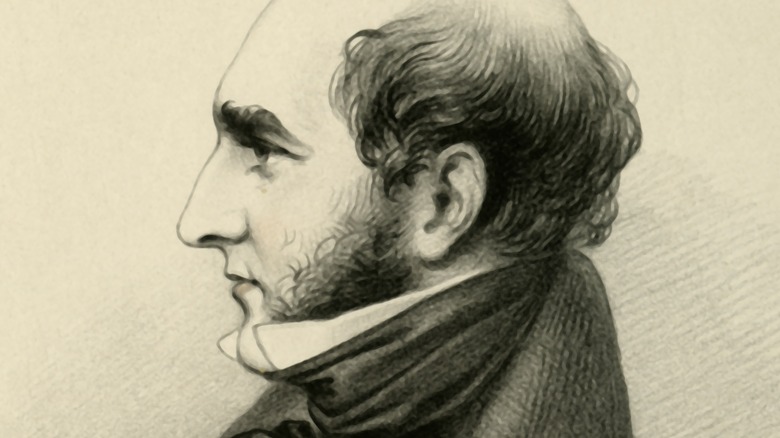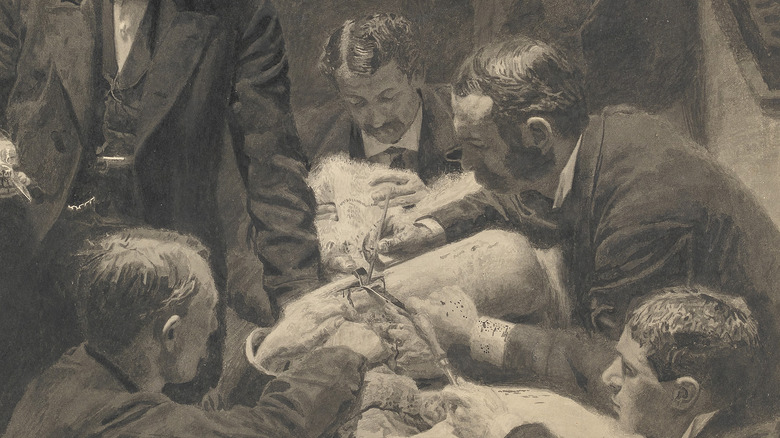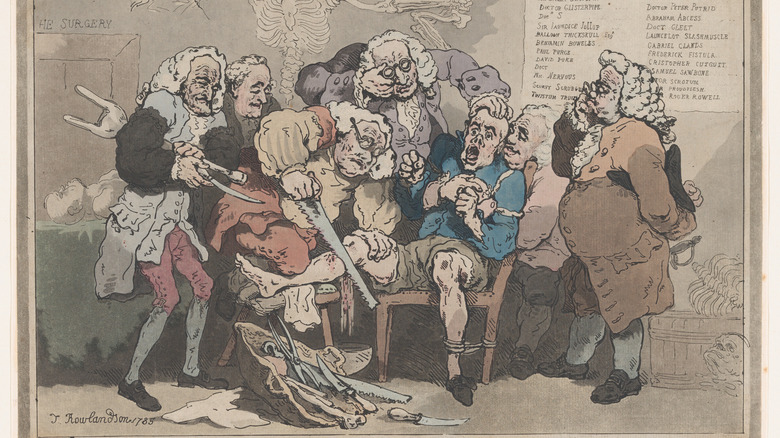How Robert Liston Killed Three People While Performing Surgery
This article contains mentions of graphic injuries and fatalities.
What's the worst fatality rate a surgeon can have for surgery? Is it 100%? Nope, try 300%. That's the number Scottish physician Dr. Robert Liston achieved when, in a rush to carry out an amputation, he not only killed his patient but two otherwise-healthy witnesses, according to a 2017 piece published by All That's Interesting.
Born in 1794, Liston attended the University of Edinburgh, where he studied medicine (via The Vintage News). Beginning his medical studies at the age of 14, Liston was particularly interested in anatomy (per the American College of Surgeons). He was undoubtedly skilled in his field, but was also known to get into disagreements with fellow surgeons — at one point, Liston even started his own anatomy class to spite his former mentor.
Even if he wasn't the most likable person, he maintained a reputation for knowing what he was doing (via the American College of Surgeons). Reputed for his accuracy and quick moves, Liston earned the informal distinction of being "the Fastest Knife in the West End," and often he was the only surgeon willing to risk operating on patients who other doctors deemed past saving.
Medicine in the early 19th century contributed to Robert Liston's success
While many of the responsibilities doctors in the 19th century were obligated to take on closely parallel those of medical professionals today, surgery was a much more dangerous endeavor (via the ASCO Post). In particular, the cause and spread of infection weren't clearly understood — if it was understood at all. Surgeons didn't change their clothes or wash their hands between patients, and infection and sepsis frequently led to patients' deaths.
In this environment, it was essential that surgeons be quick with their scalpels. The faster a surgeon could get a patient on and off their operating table, the lower the risk to the patient, according to the American College of Surgeons. Robert Liston's speed thus led to higher success rates in his work. As The Atlantic noted in 2012, Liston lost roughly one in 10 patients, while his contemporaries comparatively had one in four patients die in their care.
It was clear that Liston took pride in his own abilities. In fact, he even had a catchphrase that he liked to often say to his surgical assistants, or to the galleries of people who at that time sometimes came to observe surgeries (via The Atlantic): "Time me, gentlemen, time me!" But as much as Liston's speed helped some patients, it would also come to hurt others.
The surgery that caused Robert Liston to kill three people
Ultimately, Robert Liston's most famous surgery was a leg amputation gone wrong. Liston was known for performing speedy amputations, some completed in less than three minutes (via All That's Interesting). During one amputation, he was deploying this characteristic speed on a patient when he got sloppy. Per The Atlantic, his assistant's fingers were in the way of his knife, and Liston, moving so quickly, ended up cutting them off as he severed the leg. Later, both the patient's and assistant's wounds became infected, and they died of sepsis.
Those weren't the only casualties of the surgery, though: A bystander hovering too close to the table died of fright in the middle of the operation when Liston reared his knife back, slicing through the bystander's coat. Though the bystander himself wasn't physically injured, the mental trauma was enough to kill him. (It's important to note that while many sources have summarized the incident as fact, others like The Atlantic have called it "apocryphal.")
Though the accident seems traumatic, it didn't stop Liston from operating. He continued to work as a surgeon and even pioneered new advancements in medicine. Among these included introducing anesthesia as an important operating tool, according to All That's Interesting. Now, even centuries after his death, Liston's name remains on the lips of surgeons all over the country, with two surgery-related accouterments -– Liston's long splint and Liston's bone forceps –- named in his honor (via Nature).


